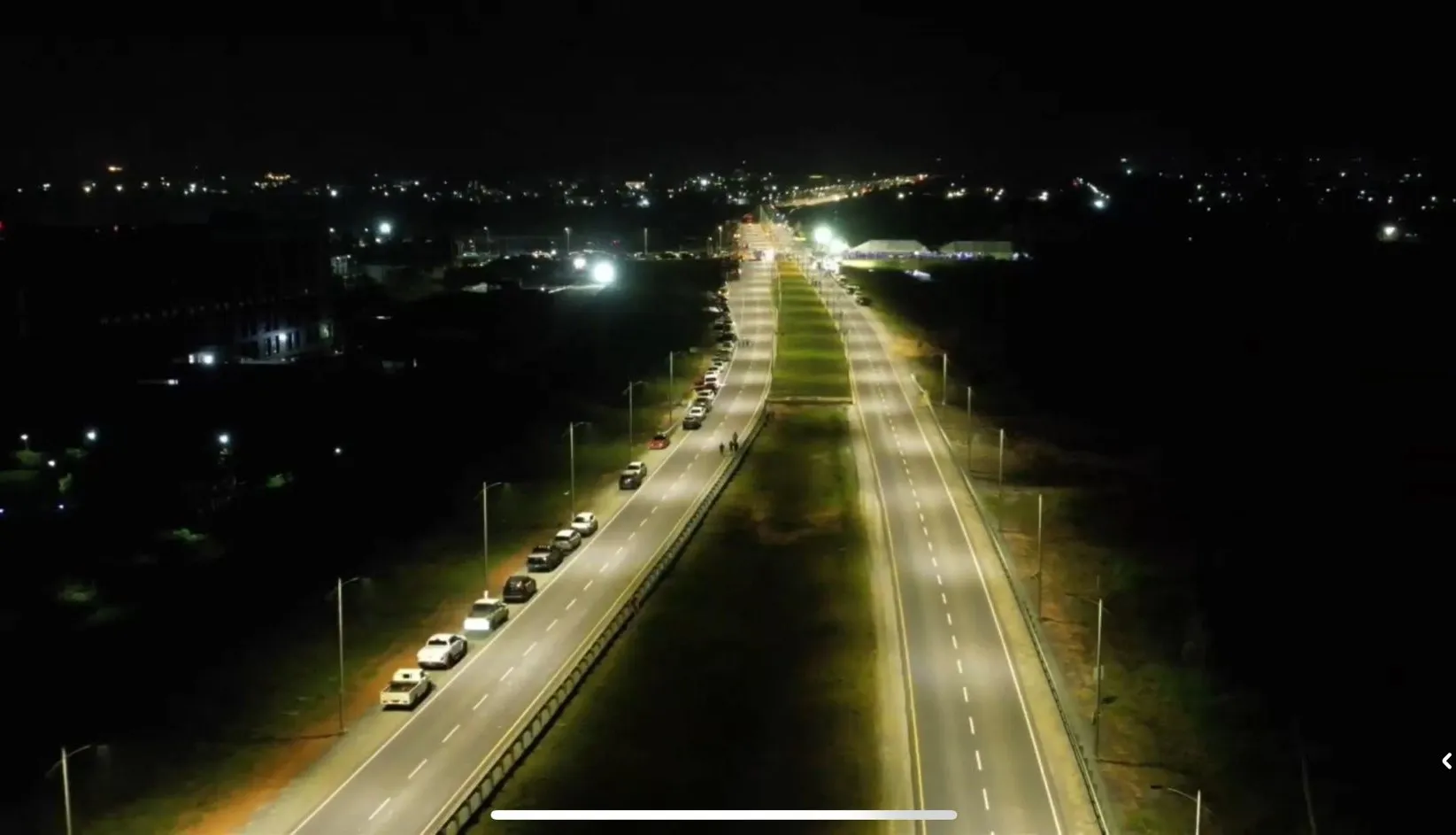Close

A new era of infrastructure development has begun with the commissioning of the Ogle to Eccles Highway, an 11.63-kilometre four-lane road that connects the East Coast to the East Bank of Demerara. Designed to ease traffic congestion and improve travel times, the highway is expected to transform the transportation landscape while acting as a major catalyst for economic growth.
Constructed by an international firm, the project initially cost around US $106 million but was enhanced to approximately US $133.8 million to accommodate wider lanes, modern drainage systems, bridges, and elevated sections to mitigate flooding risks. Despite the scope increase, authorities say the final price remained well below earlier feasibility study estimates, underscoring strong project management and prudent spending (newsroom.gy).
The highway is being described as a “corridor of opportunity” for its role in opening large areas of land for development. Officials project that this new link will attract approximately US $500 million in investments. Plans are already in motion for multiple hotels, both private and public healthcare facilities, new housing schemes, industrial estates, and manufacturing hubs along the route (stabroeknews.com).
Beyond direct construction and real estate growth, the new corridor is expected to generate thousands of jobs in related sectors and improve logistics for agriculture, mining, and commerce. By offering an alternative to the existing East Bank Public Road, it will reduce travel time between the East Coast and East Bank, cut transport costs, and ease congestion in Georgetown. The design also incorporates space for future transport solutions, including the possibility of tram or rail corridors and an integrated electronic traffic system (inewsguyana.com).
Additionally, plans are in place to extend the highway further south from Eccles to connect with Providence, creating a seamless link to the proposed new Demerara River Bridge. This will improve connectivity between the coast and the interior, promoting balanced national development.
The highway’s construction was funded in part by an international line of credit secured years ago. After periods of delay, the commissioning marks the culmination of persistent planning and execution. As the country’s economy continues to expand, the Ogle–Eccles Highway is poised to serve as a critical backbone for investment, housing, healthcare, and industrial activity, supporting Guyana’s vision of sustainable and inclusive growth.

The Guyana Project is an independent media platform delivering fact-checked, ground-level reporting on politics, economy, and public life in Guyana. With a focus on transparency and development, we bring unfiltered news and thoughtful analysis to help shape a more informed, forward-looking nation.

New Ogle–Eccles Highway Commissioned, Unlocking Billions in Investment Potential

Lorem Ipsum is simply dummy text of the printing and typesetting industry. Lorem Ipsum has been the industry’s standard dummy text ever since the 1500s, when an unknown printer took a galley of type and scrambled it to make a type specimen book. It has survived not only five centuries, but also the leap into electronic typesetting, remaining essentially unchanged. It was popularised in the 1960s with the release of Letraset sheets containing Lorem Ipsum passages, and more recently with desktop publishing software like Aldus PageMaker including versions of Lorem Ipsum.
t is a long established fact that a reader will be distracted by the readable content of a page when looking at its layout. The point of using Lorem Ipsum is that it has a more-or-less normal distribution of letters, as opposed to using ‘Content here, content here’, making it look like readable English. Many desktop publishing packages and web page editors now use Lorem Ipsum as their default model text, and a search for ‘lorem ipsum’ will uncover many web sites still in their infancy. Various versions have evolved over the years, sometimes by accident, sometimes on purpose (injected humour and the like).
Contrary to popular belief, Lorem Ipsum is not simply random text. It has roots in a piece of classical Latin literature from 45 BC, making it over 2000 years old. Richard McClintock, a Latin professor at Hampden-Sydney College in Virginia, looked up one of the more obscure Latin words, consectetur, from a Lorem Ipsum passage, and going through the cites of the word in classical literature, discovered the undoubtable source. Lorem Ipsum comes from sections 1.10.32 and 1.10.33 of “de Finibus Bonorum et Malorum” (The Extremes of Good and Evil) by Cicero, written in 45 BC. This book is a treatise on the theory of ethics, very popular during the Renaissance. The first line of Lorem Ipsum, “Lorem ipsum dolor sit amet..”, comes from a line in section 1.10.32.